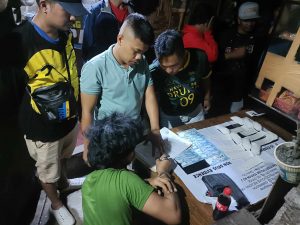The City Council passed on final reading the ordinance creating a transformative program for children-at-risk during yesterday’s regular session.
“The mayor suggested this ordinance to the committee on peace and ordinance to address (the needs) of the children-at-risk because we tend focus to children in conflict-with-the-law. This entails that we wait for the children to be acquitted yet before we provide intervention,” Councilor Maria Belen Acosta, chair of the committee on peace and public safety, told reporters.
The City Social Services and Development Office (CSSDO) is tasked to craft and implement a comprehensive program for children-at-risk.
Unlike the program for children-in-conflict-with-the-law (CICL) where the court usually dictates the minor to undergo a rehabilitation program, this ordinance mandates CSSDO personnel to determine at-risk children who will undergo a transformative program.
Children-at-risk are those who are “vulnerable to and at risk of behaving in a way that can harm themselves or others, or vulnerable and at risk of living, pushed, and exploited to come into conflict with the law because of personal, family, and social circumstances, such as, but not limited to being abused by any person through sexual, physical, psychological, mental, economic or any other means and the parents or guardians refuse, unwilling or unable to provide protection for the child;
Being exploited sexually or economically, being abandoned or neglected after diligent search and inquiry where the parents or guardian cannot be found; coming from a dysfunctional or broken family or being without a parent or guardian; being an out of school youth; being street children; being a member of a gang; living in a community with a high level of criminality or drug abuse; living in a situation where armed-conflict is prevalent; and, committing victimless crimes.”
The CSSDO is also mandated to create a module for the transformative program, separate from that of the CICL. A facility that will be the venue for the transformative program will also be established.
The implementing rules and regulations will determine whether this will be centralized or per barangay.
The budget for the said ordinance “will be from the City Mayor’s Office for the meantime but will be included in the annual budget and the supplemental budget,” Acosta said.
The councilor is still waiting for the recommendation from the CSSDO on the funding needed.
Meanwhile, SK Federation Jaffar Marohomsalic expressed his support for the measure. “(The children-at-risk) sector of our community is really very vulnerable. They cannot protect themselves so they need the intervention of the government,” Marohomsalic said.
“With this ordinance, there will be steps for interventions so that they will not elevate to the status of CICL,” Acosta said.
The intervention programs include, but not limited to, child-parent education, counseling, skills training and other activities that will enhance the psychological, emotional, and psycho-social well-being of a child.
“What the mayor wants is, before a child commits a crime or proven guilty, there should be an intervention,” the councilor added.
By Julianne A. Suarez and Niño Nicole Villareal/UM Intern




